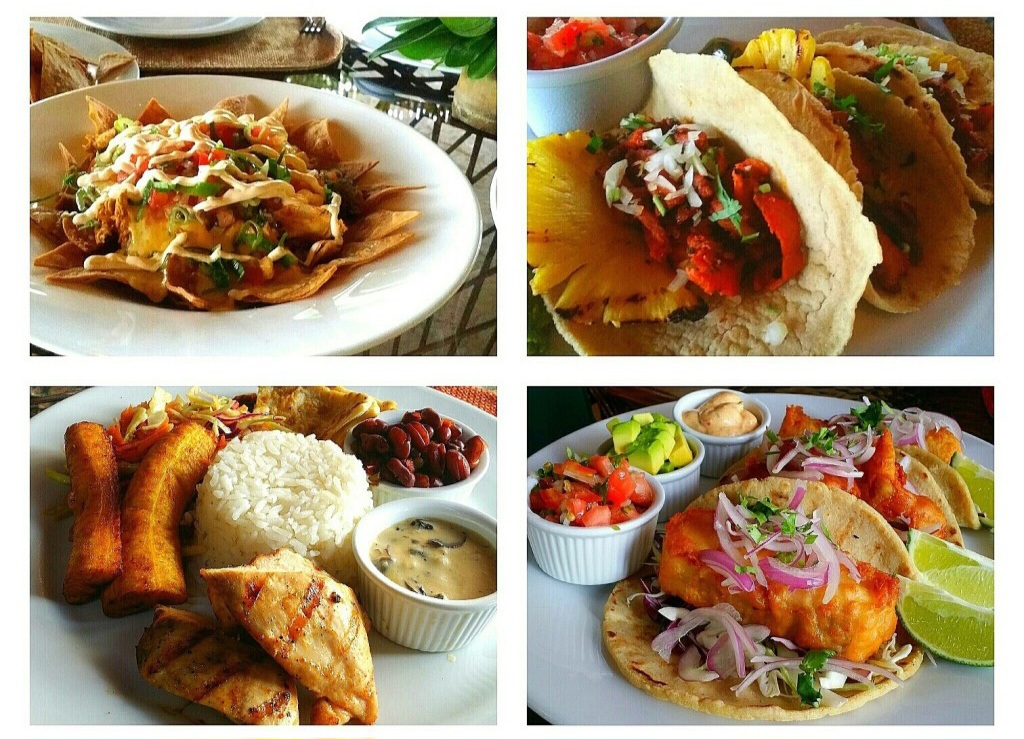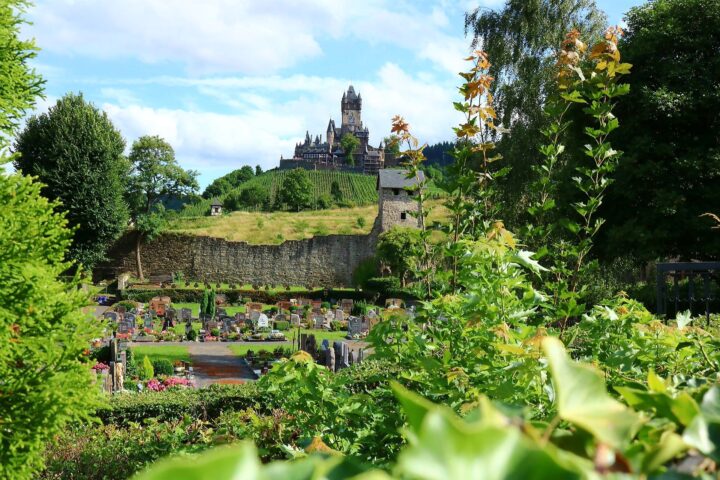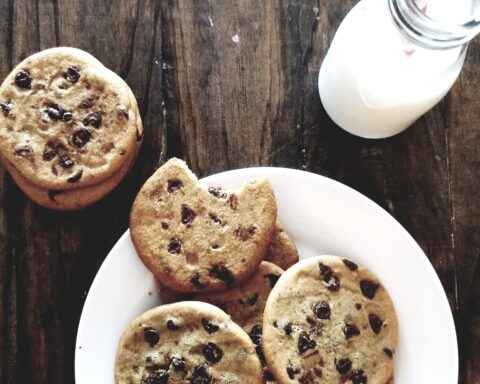Nestled between Nicaragua and Panama, Costa Rica is a Central American country that draws heavily on culinary staples from Latin America yet manages to differentiate itself from the cuisine of its neighbors by incorporating a healthy rainbow-like variety of fresh fruits and vegetables in its traditional dishes.
Costa Rica offers countless opportunities to feast on conventional cuisine—from roadside shacks to resort dining, there are truly no misses when it comes to culinary experiences. Of course, I’m an advocate for trying to eat as authentically as possible when traveling and seeking out advice from locals is always my preferred method of finding both hidden gems and hotspots. Since the late 90s, tourism has garnered more foreign exchange for Costa Rica than the export of bananas, coffee and pineapples combined so, naturally, the country offers a number of touristy eateries. In fact, in 2015 tourism in Costa Rica reached an all-time high with a record 2.66 million foreign visitors trekking to the tropical nation but, rest assured, travelers can still eat like true Ticos (native Costa Ricans).
XOXOXO
COMIDA TIPICA: TRADITIONAL AND TYPICAL COSTA RICAN FOOD
Casado (or Comida Tipica which translates to “typical food”) – The most common dish in Costa Rica. It consists of beans, rice with finely diced red bell peppers and onions, fried plantains, a cabbage salad with tomato and carrot, and a choice of meat between chicken, fish, pork, or steak with grilled onions. The meat that comes with a casado is grilled or sautéed, but never fried. Sometimes the casado includes french fries or extra vegetables such as avocados; the side accompaniments vary but are nonetheless delicious.
Where to eat it: Anywhere and everywhere! Casado can be found at all hours of the day and night in every restaurant and soda (Costa Rican diner) in any part of the country. If you are fortunate enough to receive an invitation to a Tico’s home, you can certainly expect casado to be served.
Ceviche – A popular boca (tapas or appetizer) consisting of fresh raw fish marinated in citrus juices such as lime with finely diced herbs and veggies; the acid found in the citrus “cooks” the raw fish. In Costa Rica, the best ceviche is made with local tilapia or corvina (white sea bass) and tossed with cilantro, garlic, hot pepper, onion, and celery. It’s both refreshing and filling.
Where to eat it: Ceviche can be found in most restaurants and some sodas. If you are passing through Orotina on the way to the Pacific Coast, stop by the fresh fruit stands and try some green mango ceviche (the mango replaces the fish in this dish) – it’s delightful (and a welcome substitute for a non-fish eater like me)!
Gallo Pinto – A typical breakfast plate in Costa Rica consisting of rice and beans mixed together (not separate like the casado), fried or scrambled eggs, chopped beef, fried plantains, and tortillas (think of it as a morning standard like a proper English or Irish breakfast). A popular custom in Costa Rica is to pour Salsa Lizano over the gallo pinto. Salsa Lizano is a sweet greenish-brown salsa with a faint hint of spice.
Where to eat it: Gallo Pinto can be found in any restaurant or soda, and although it is considered a breakfast food, it can be ordered at any time of day.
Sopa de Mariscos – A tomato-based seafood soup with clams, mussels, shrimp, squid, fish, and vegetables (similar to Italian cioppino).
Where to eat it: Sopa de Mariscos is sold in most restaurants, but the best variety comes from the nation’s Pacific coastal town restaurants.
Arroz con Mariscos – A dish overflowing with rice with some vegetables and seafood—usually clams, mussels, shrimp, squid, and fish—tossed in.
Where to eat it: Arroz con Mariscos is another one of those dishes that is best eaten in Costa Rican coastal towns. A good rule of thumb is the closer the town/restaurant to the coast, the better the seafood.
Tamales – Though they are time-consuming, they offer no shortage of deliciousness! Costa Rican tamales are boiled plantain leaves stuffed with corn meal mix, saffron rice, pork, and an array of beans and vegetables.
Where to eat it: Tamales can be found in the local farmer’s markets and occasionally in select grocery stores, but they taste best freshly homemade because they are typically only made for special occasions such as Christmas or a wedding which often means that the main ingredient is love.
Empanadas – Fried or baked dough filled with cheese, beans, potatoes, or chicken. Popular as a snack between academic classes or meals, they are best eaten with a drizzle of hot sauce.
Where to eat it: Empanadas can be found everywhere: restaurants, sodas, and even street vendors dedicated solely to selling empanadas.
Chicharrones – Three words: Juicy fried pork. Perhaps not the healthiest dish, this fried goodness is not to be confused with the other kind of chicharrones which are essentially fried pork rinds.
Where to eat it: Chicharrones are available at festivals. On a non-festival day, look for the chicharrones sign (usually with a rudimentary drawing of a pig) outside of the local sodas because these treats can’t be found everywhere.
Carnitas – Essentially beef kebabs grilled over an open hubcap-grill fire. Eat the dish by sliding a piece off between a folded tortilla.
Where to eat it: Carnitas, much like chicharrones, are a festival snack—hunting down the treat is an excellent excuse to attend a Costa Rican festival (as if an excuse is needed).
Pan – A general term for bread. There are dishes that Costa Ricans do really well and bread should be counted among them. It’s customary to eat a slice of bread with natilla (sour cream) while taking a coffee break.
Where to eat it: There are bakeries on every corner in Costa Rica—seriously, that’s not an exaggeration. Pan y natilla is one of those treats you can expect to be served with coffee in a Costa Rican home.
Chocolate – If the only chocolate you’ve ever eaten comes in the form of grocery store candy, you are truly missing out. Cacao, the tiny brown seed used in the production of chocolate, is native to Costa Rica. I don’t have to sell you on the virtues of chocolate, do I?
Where to eat it: Chocolate-based sweets can be found everywhere but for an authentic, hands-on experience, take a cacao plantation tour where you can actually eat the fruits of your labor.
XOXOXOX
DRINK UP: QUENCHING YOUR THIRST IN COSTA RICA
Coffee – Even for a non-coffee drinker like me, there is something so rich and satisfying about a cup of Costa Rican coffee. It’s robust and full-bodied and if that description sounds like a sommelier’s notes about wine, it’s because Ticos and savor coffee much like an oenophile would a glass of wine. Natives drink coffee even in hot and humid weather.
Where to drink it: Absolutely everywhere! Roadside restaurants will serve coffee, although it’s likely to be an inferior brand to what you can buy yourself. In the local supermarkets, Volio or Café Britt are excellent brands to sample and souvenir shops will have at least one type brewed fresh for you to sip on while you shop (and, yes, sipping on a soothing cup of java does entice you to purchase more). On a coffee tour, you can try and buy the local farmer’s own brand of delicious rich coffee. Surprisingly, the best coffee I sample came from the Toucan Rescue Ranch in San Josecito. Yes, that’s right—an animal rescue that houses and fosters sloths, toucans, owls and a number of other creatures sells some of the best coffee in the country.
Horchata – As popular in Costa Rica as it is in Mexican culture, it is a cold drink made from milk, rice flour, a lot of cinnamon, and sugar. In my opinion, it tastes like a slightly spicy melted milkshake—delicious.
Where to drink it: Horchata is widely available all over the country.
Pipa fría – Fresh chilled coconut water. It’s the perfect pick-me-up on a sweltering day – it is loaded with vitamins and gives you an instant burst of energy. Bonus: It’s an aphrodisiac so be careful who you share your coconut with.
Where to drink it: You know those guys who sell roses at traffic intersections? Well, pipa fría is sold by strolling vendors in much the same way and also on the beaches and sometimes at small roadside fruit and vegetable stands. Want to get really authentic? Buy an actual whole coconut with a hole drilled in the top or you can do what most Ticos do and purchase it in a plastic bag and drink it through a straw.
Refrescos – Also known as frescos, these natural, fresh squeezed fruit juices mixed with water or milk, with sugar added. There is an impressive variety of refrescos available in Costa Rica:
- Carambola (star fruit)
- Cas (a fruit native to only Costa Rica)
- Guanabana (soursap)
- Mango
- Maracuyá (passionfruit)
- Mora (blackberry)
- Papaya
- Piña (pineapple)
- Tamarindo
Where to drink it: Refrescos, or frescos as they are sometimes called, are widely available in all restaurants and sodas, including fast food restaurants. When mulling over the menu, ask which of the refrescos are jugos naturales to ensure you are getting a freshly made beverage as opposed to one made from pre-packaged pulp.













[…] post [FORK IN THE ROAD] What to Eat & Drink in Costa Rica appeared first on The Palate […]